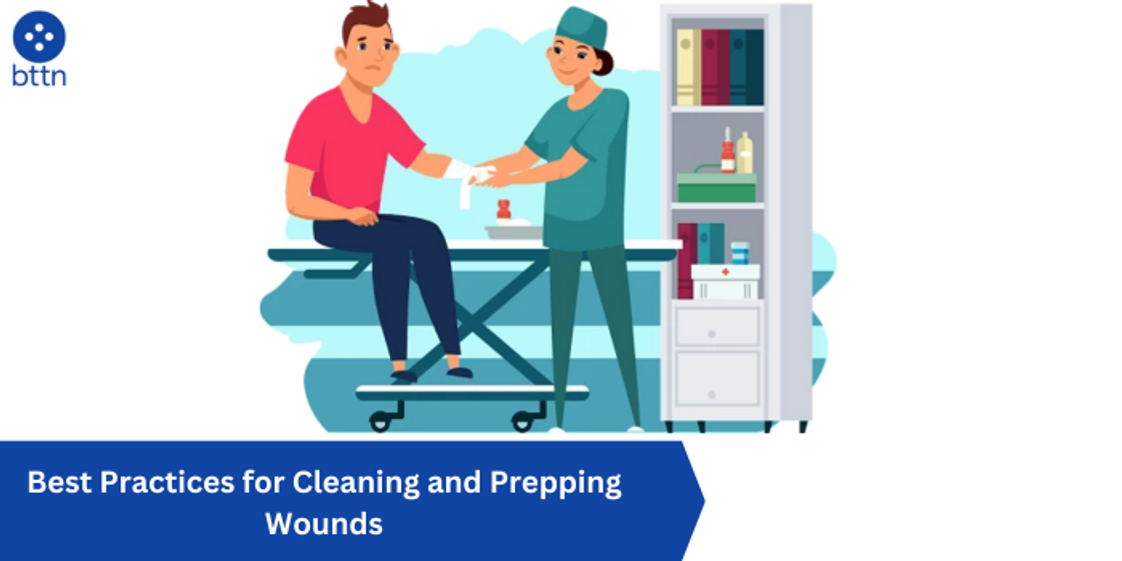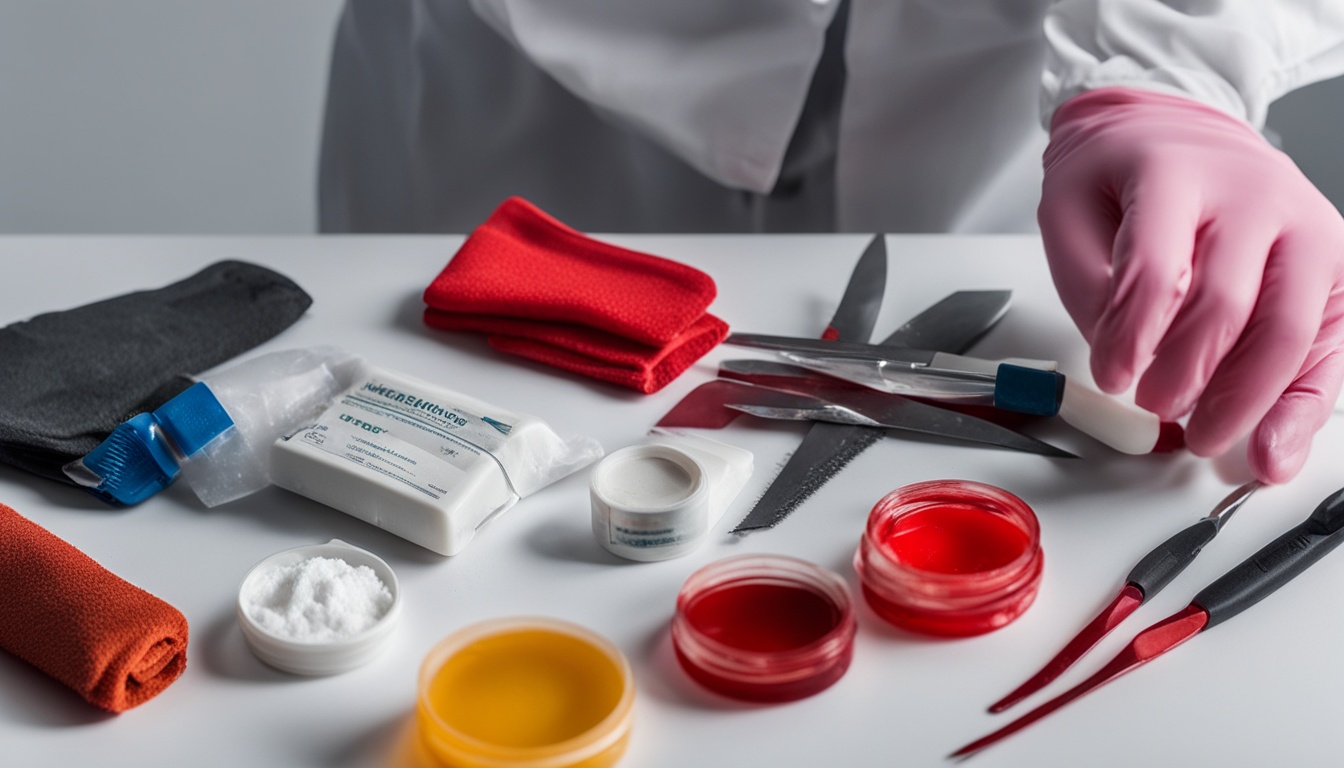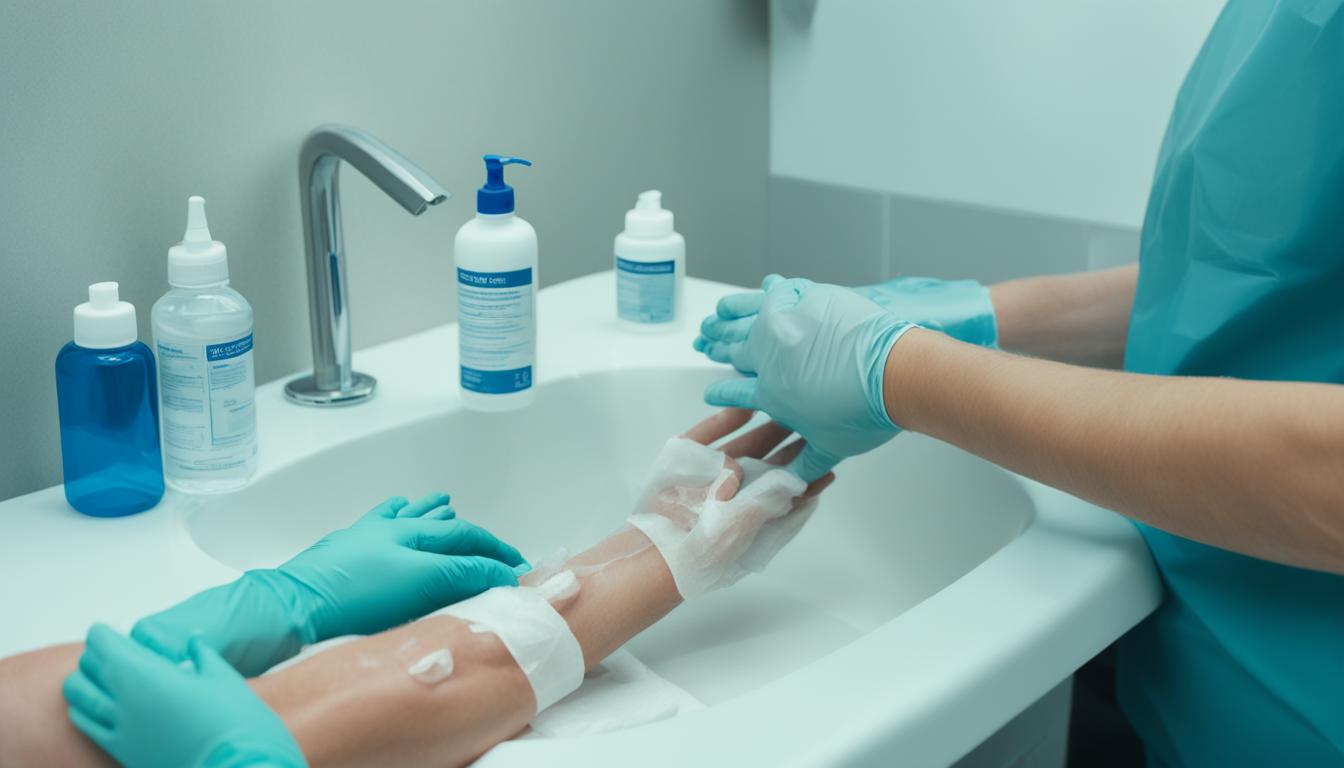
Best Practices for Cleaning and Prepping Wounds
Posted by Pankaj Dhiman on Aug 7th 2024
Ensuring proper wound care is paramount for fostering healing and averting infection. This guide delves into the optimal methods for cleaning and prepping wounds, aiming to streamline your recovery process. By adhering to these best practices, you can significantly enhance the efficacy of your wound care regimen.

Key Takeaways
- Proper wound cleaning and preparation are essential for preventing infection and promoting healing.
- Understanding the risks of improper wound care and the benefits of effective techniques can help you make informed decisions.
- Step-by-step instructions on how to clean and prep a wound can empower you to take charge of your own wound care at home.
- Maintaining good hygiene and using the right tools and products are key to successful wound care.
- Seeking professional medical advice is recommended for severe or complex wounds.
Shop Now Professional Wound Care Supplies
Understanding the Importance of Proper Wound Care
Proper wound care is integral to the healing process. Neglecting it can lead to severe complications, affecting recovery and overall health. It is vital to comprehend the significance of proper wound care for optimal healing outcomes.
Risks of Improper Wound Care
Ignoring proper wound care can lead to several issues, including:
- Increased risk of infection, which can delay healing and lead to more severe complications
- Delayed wound healing, prolonging the discomfort and inconvenience for the patient
- Development of complications, such as scarring, chronic pain, or even the need for amputation in severe cases
Must Read: Open Wound: Types, Treatments, and Complications
Benefits of Effective Wound Cleaning and Preparation
Effective wound cleaning and preparation offer numerous advantages, such as:
- Reduced risk of infection, ensuring a smooth and timely healing process
- Faster wound healing times, allowing patients to return to their normal activities more quickly
- Improved overall outcomes, including reduced scarring, pain, and the need for further medical interventions
Understanding the importance of proper wound care enables healthcare professionals and patients to collaborate effectively. Investing in effective wound cleaning and preparation yields significant long-term benefits, enhancing patient experiences and healthcare outcomes.
| Risks of Improper Wound Care | Benefits of Effective Wound Cleaning and Preparation |
|---|---|
| Increased risk of infection | Reduced risk of infection |
| Delayed wound healing | Faster wound healing times |
| Development of complications | Improved overall outcomes |
Must Read: 9 Different Types of Wound Care Dressings and Their Uses
How to Clean and Prep a Wound
Properly cleaning and preparing a wound is essential for optimal healing and infection prevention. This guide details the steps for effectively cleaning and prepping a wound at home:
- Gather the necessary supplies: Clean, sterile gauze pads, antiseptic solution (such as saline or diluted antiseptic), clean towels, and medical gloves (if available).
- Wash your hands thoroughly with soap and water, or use an alcohol-based hand sanitizer.
- Gently clean the wound with the antiseptic solution, using clean gauze pads. Avoid scrubbing the wound, as this can further damage the tissue.
- Rinse the wound with clean water or saline solution to remove any remaining debris or antiseptic residue.
- Carefully pat the wound dry with a clean towel, taking care not to irritate the skin.
- Apply a thin layer of antibiotic ointment to the wound, if recommended by a healthcare professional.
- Cover the wound with a sterile, breathable dressing or bandage to protect it from further contamination.
Explore - Browse Wound Dressings | Wound Care Solutions
Adhering to these how to clean wound and wound care prep steps is crucial for proper wound healing and infection prevention. It is important to seek medical attention if the wound is severe, shows signs of infection, or does not begin to heal within a few days.

A person washing their hands with soap and water before approaching a wound. The wound is visible and there are different tools and supplies set up nearby, such as sterile wipes, gloves, and gauze. The person is wearing medical gloves and using a sterile wipe to clean the wound, applying gentle pressure to remove any debris. The wound appears to be getting cleaner and the person is focused on their task.
Conclusion
This article has delved into the critical best practices for wound cleaning and preparation. It underscores the significance of proper wound care in ensuring effective healing and minimizing complications. Readers are now equipped with a detailed guide to manage their wounds adeptly.
Adopting the strategies presented here empowers individuals to engage actively in their wound care. This proactive approach leads to a diminished risk of infection, accelerated healing, and a reduced chance of scarring or other enduring issues.
Wound care stands as a pivotal element of overall health and wellness. By emphasizing meticulous wound cleaning and preparation, individuals facilitate their healing journey and pave the way for a successful recovery. Armed with the insights from this article, readers are now well-positioned to manage their wound care effectively, aiming for optimal healing outcomes.
FAQs
What are the main steps for cleaning and prepping a wound?
Essential steps for cleaning and prepping a wound include: 1. Wash your hands thoroughly with soap and water. 2. Rinse the wound with clean, running water to remove any debris or dirt. 3. Gently clean the area around the wound with a mild soap and a clean washcloth. 4. Pat the wound dry with a clean, sterile towel. 5. Apply an antibiotic ointment to help prevent infection. 6. Cover the wound with a sterile bandage or dressing.
Why is proper wound care important?
Proper wound care is crucial for promoting healing and preventing complications such as infection. Effective wound cleaning and preparation can significantly reduce the risk of infection, expedite the healing process, and enhance overall outcomes.
What are the risks of improper wound care?
Improper wound care poses risks including infection, delayed healing, the development of complications, and the potential for the wound to worsen or become more severe. Neglecting or mismanaging a wound can lead to serious health issues.
How often should a wound be cleaned and redressed?
The frequency of cleaning and redressing a wound varies based on its type and severity. Generally, a wound should be cleaned and redressed at least once daily, or more frequently if it becomes dirty, wet, or shows signs of infection.
What supplies are needed for proper wound cleaning and preparation?
Essential supplies for wound cleaning and preparation include: - Clean, running water - Mild soap - Clean, soft washcloth - Sterile gauze pads or bandages - Antiseptic ointment or cream - Medical tape or adhesive bandages
When should a person seek medical attention for a wound?
Seeking medical attention for a wound is crucial if it is severe, deep, or does not start to heal within a few days. Signs indicating the need for professional medical care include excessive bleeding, signs of infection (such as redness, swelling, or pus), or if the wound is located in a sensitive area, such as the face or near a joint.
